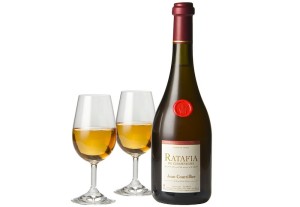Quick! If you are a CSW, tell me – what is Pineau des Charentes? If you are a CSS, answer me this: What is Pommeau de Normandie?
The answer to both questions is: a sweet, fortified, wine-based beverage, typically referred to in the European Union as a Vin de Liqueur.*
Now, here’s my next question: What is Ratafia de Champagne?
Answer: A Vin de Liqueur, produced in the Champagne region that – after an 800-year history of production – just received its first-even PGI status as of August 27, 2015. Bottles of Ratafia de Champagne, alternatively known as Ratafia Champenois, will be eligible for PGI status as of the 2016 release.
The new PGI is actually part of a larger project, begun back in June of 2014 when a group representing distillers, wine growers, and wine producers in the Champagne region created an organization known as the “Association of Producers of Spirits of the Champagne Geographical Indication” (Boissons Spiritueuses Champenoises). Among the goals of the group was to obtain PGI status for Marc de Champagne, Fine de Champagne, and Ratafia de Champagne. PGI status was obtained for Marc de Champagne in January 2015; the PGI for Fine de Champagne was approved in February 2015.
The regulations for Ratafia de Champagne PGI specify that the product is produced using the three main grapes of the Champagne region – Pinot Noir, Pinot Meunier, and Chardonnay. The juice that will be fortified and made into Ratafia is pressed after the juice to be used in the area’s famous sparkling wine is pressed – during the first part of the final – or rebèche – pressing. The juice is then fortified with grape-based brandy of the region, which is also produced from the rebèche juice. Production of Ratafia de Champagne will be limited to 15 million bottles – about 6% of the total output of the AOC – per year.
*More specifically, Pineau des Charentes is a Vin de Liqueur produced in the Cognac (Charentes) region of France, from must freshly pressed from the allowed grapes of the region. The must is fortified with Cognac, and the resulting beverage – at 16–22% alcohol by volume – is aged for at least 18 months, with a minimum of 12 in oak. Being produced from unfermented must, Pineau des Charentes can also be classified as a mistelle.
*Pommeau, also technically a mistelle, is made in the Calvados region with unfermented apple juice, fortified with one-year-old Calvados. The resulting mixture, which has 16-18% alcohol by volume, is then aged in oak barrels for a minimum of 14 months.
Post authored by Jane A. Nickles – your blog administrator!
